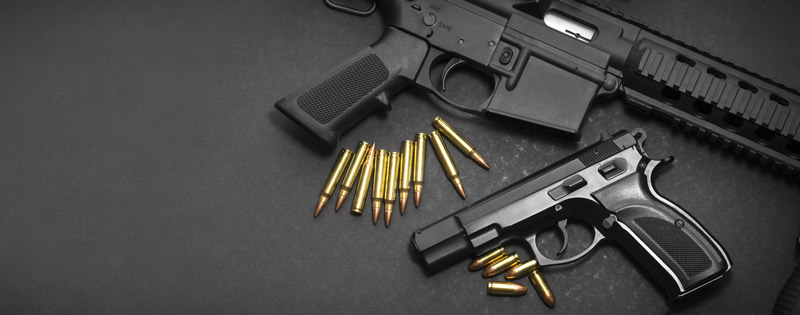
Injuries from firearms represent a serious public health issue. And although gunshot wound fatalities in the United States number at just under 40,000, more people suffer from nonfatal gunshot injuries than die. Survival after being injured by a fired projectile is related to a number of factors. The purpose of this article is to discuss those factors.
First, understand that gunshot wound injuries can generally be categorized as those occurring from interpersonal violence, self-inflicted actions, and unintentional injuries. These categories can sometimes be useful in determining the likelihood of severe injury. More important, however, is to understand some of the ballistics related to gunshot wounds.
Ballistics relate to the study of the flight behavior and effects of bullets discharged from a gun. Bullet wounds correlate with a bullet’s mass and velocity; the bullet’s flight orientation; and the tissue where the bullet enters.
In general, gunshot wounds are classified according to the velocity (low, high) of the projectile. Low velocity is defined as less than 2000 ft/s. Bullets from handguns generally have a velocity of 1000 ft/s
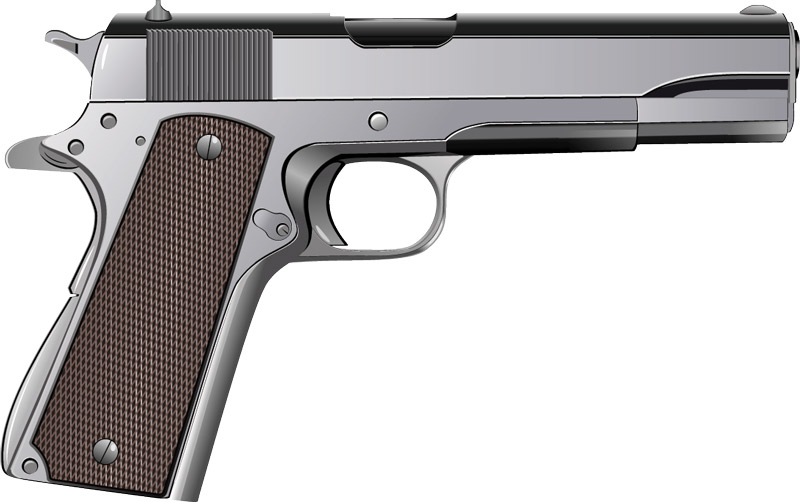
The greater the velocity of the bullet, the greater the potential to cause damage. Ballistics can be further subdivided into internal ballistics, external ballistics and terminal or wound ballistics.
Internal Ballistics
Internal ballistics refers to how a bullet (also known as a cartridge) is propelled from a firearm. It considers types of propellants or gun powder; the chamber or where the bullet rests before being fired;
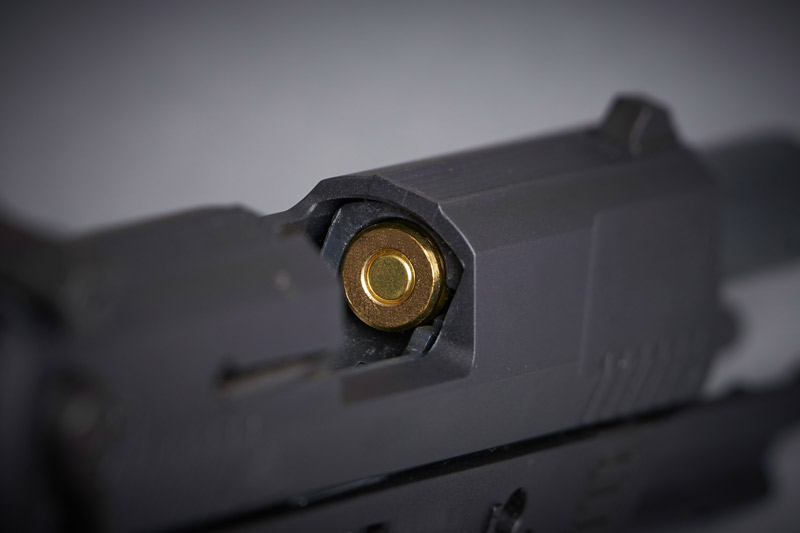
and the barrel, or structure through which the bullet travels before exit.
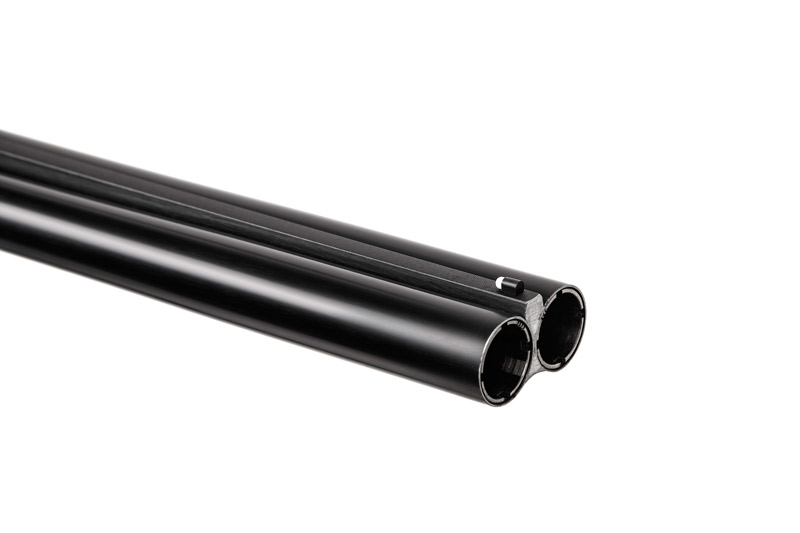
A bullet is actually made of three parts, the primer, propellant and then the projectile bullet. These parts sequence from rear to the nose as the bullet sits in the chamber.
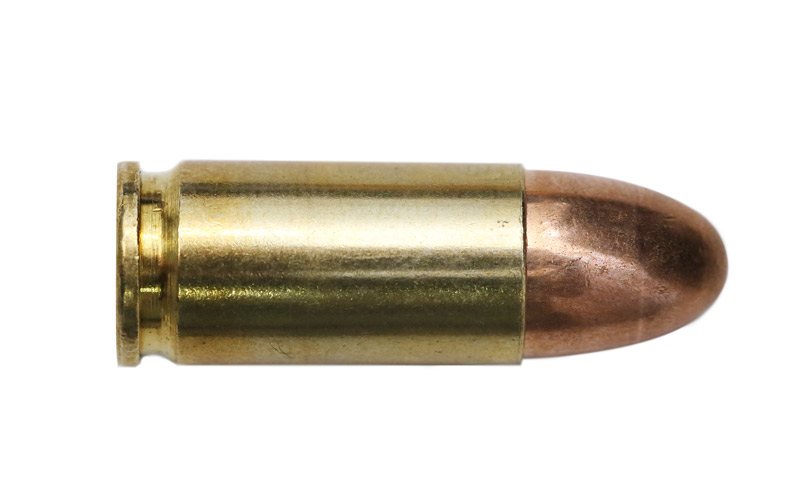
After the trigger of a gun is pulled, the hammer of the firearm hits the primer of the bullet and ignition of the propellant is instigated. Ignition of the propellant initiates combustion.
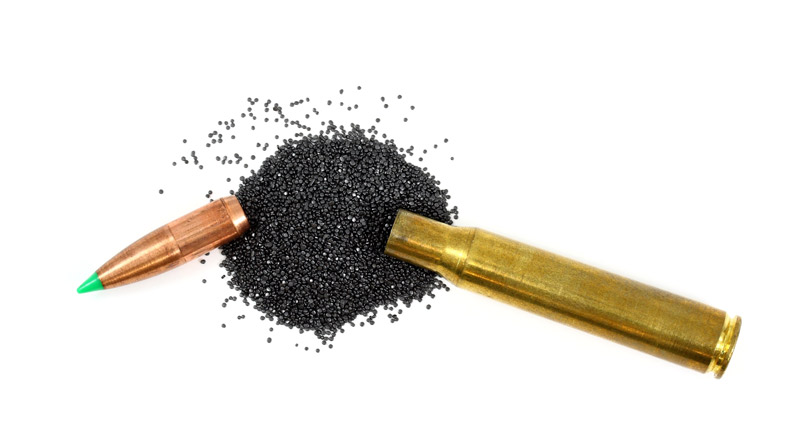
Upon combustion of the propellant, gases are produced to creates a pressure wave which forcefully moves the projectile portion of the bullet down the barrel of the gun.
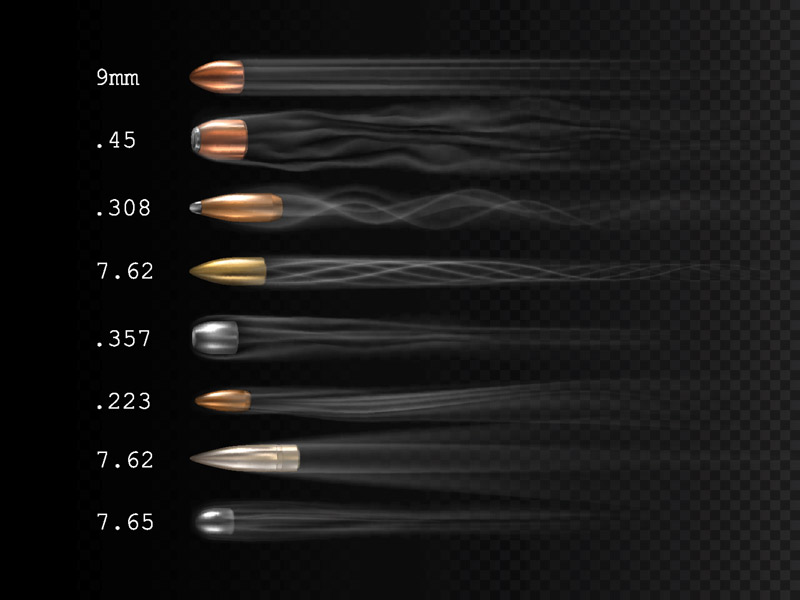
The remnant left behind after the projectile is fired from the barrel contained the primer and propellant. It is also known as the casing.
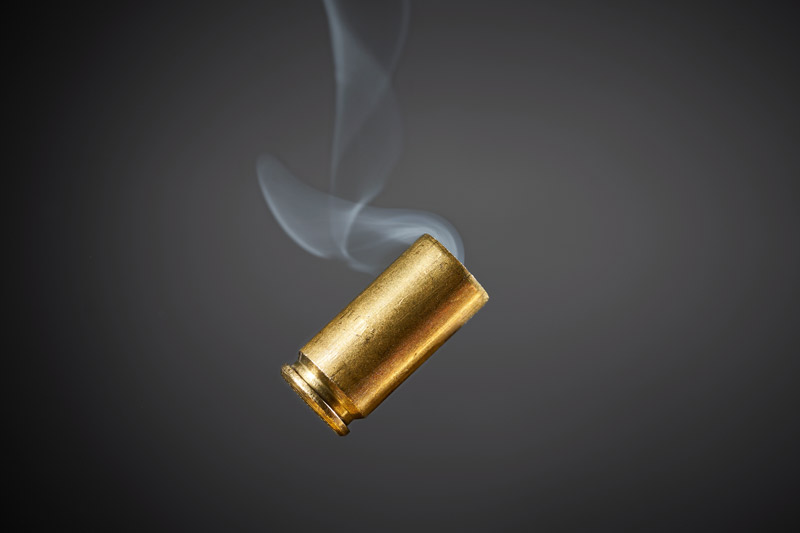
longer the barrel, the more time for bullet acceleration by the expanding gases. Accordingly, guns with a shorter barrel, such as handguns, produce a lower velocity bullet. The barrel of a firearm also possesses spiraling grooves that cause bullets to spin along their long axis as they emerge from the gun.
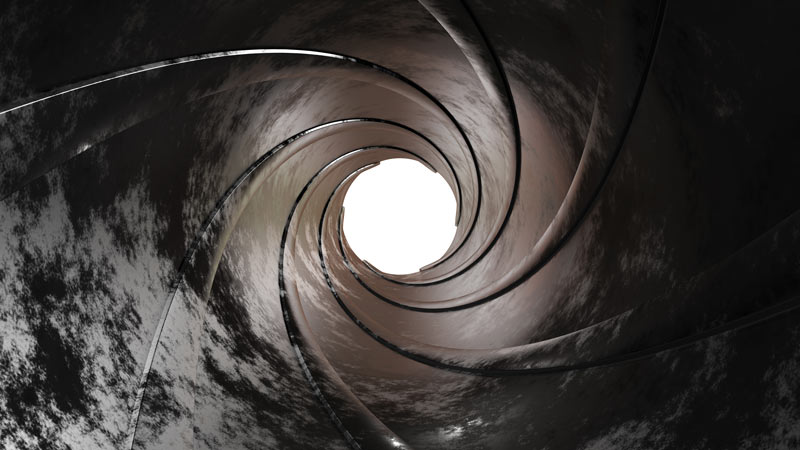
Spin permits the bullet to travel straight and resist deflection before reaching its target.
External Ballistics
External ballistics describe the trajectory of the projectile in flight before it reaches its target. Different forces act on a bullet once it emerges from the chamber. First, if the shooter does not keep the gun closely aimed at the target at the time of the shot, and deviates the barrel, even slightly, there is an effect on the bullet’s path to the target. In addition, as the distance a bullet travels increases, the bullet starts a slight downward curve because of gravity. This is also called bullet drop. Another effect comes from air resistance and wind. Qualities of the bullet and weapon itself also play a role in external ballistics. For example, the type and size of the bullet, can affect its trajectory.

The bullet also experiences yaw, precession and nutation during flight that will determine its flight to the target, and the ultimate damage that can be imparted. These terms refer to movements of the bullet based on multiple axes. The most important of these motions with regard to injuries is yaw. Yaw refers to the angle of the long axis of the projectile as it relates to the path of its flight.
It is analogous to the path a diver takes in the water. If the diver enters the water straight, this would be 0 degrees of yaw.
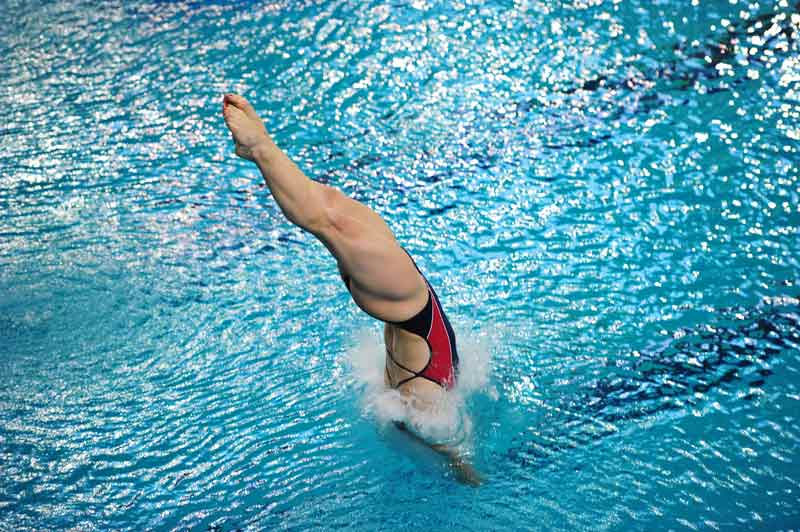
If the diver enters in a belly-flop type of pattern, then this would represent 90 degrees of yaw.
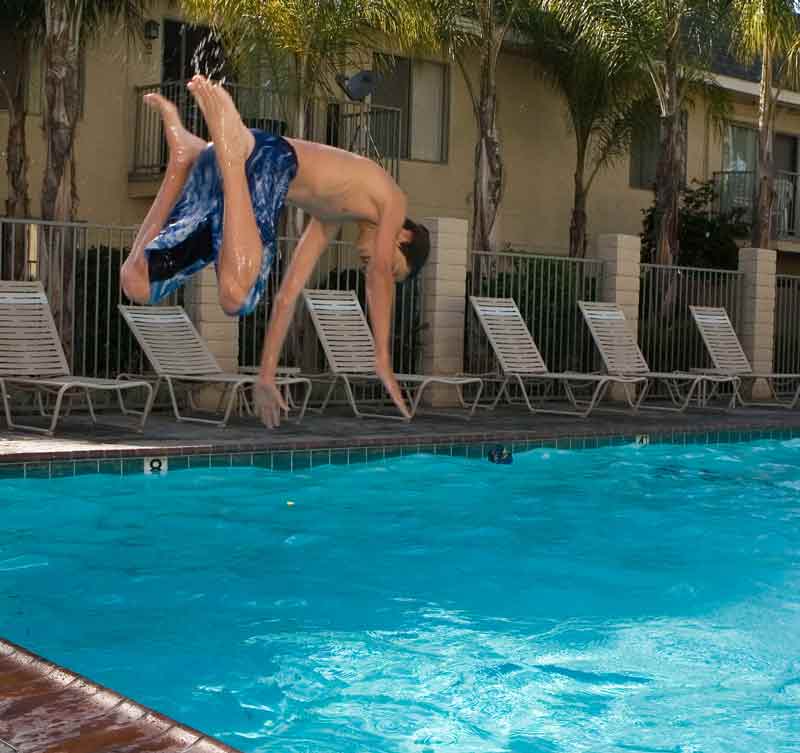
Yaw may also occur within soft tissues of a target as well. Changes in a projectile’s center of mass can also affect yaw.
Terminal Or Wound Ballistics
Bullets do damage when they transfer energy to the things they hit. When the bullet loses its momentum quickly, it produces more forces. For the most part, when a gunshot strikes an individual, the extent of injury is controlled by the anatomic structure(s) it impacts and a tissue’s density. Direct injury to critical organs can be fatal. Notwithstanding the anatomic structure that is struck, the most severe injuries occur when the projectile yaws early in its path in the tissues; when fragments develop and are large; and when the projectile is traveling at high velocity. The spin of the projectile along its axis that occurred during the external ballistic phase is no longer observed in the body because the greater density of the tissues disrupts it. This results in yaw after entry into the tissues.
Other important factors regarding injury includes whether the bullet deforms or fragments upon entry into the tissue. Deformity is related to the density of the projectile. When the nose of a bullet deforms upon impact, characteristically into a mushroom shape, a greater surface area of the projectile is developed that can increase wound severity. Fragmentation of the bullet works similarly. Fragmentation increases the volume of tissue that can be crushed via the multiple projectile fragments striking the tissue.
Injuries
Two major mechanisms of wounding of the soft tissues from a bullet are recognized by medical providers. These includes crushing of tissue and stretching of tissue. The mechanisms are important to understand because evaluation and treatment relies on this understanding.
Crushing of tissue creates a permanent wound channel or cavity. When yaw approaches 90 degrees upon or during impact, a larger amount of crush to the tissues can occur. This helps explain why entrance wounds are typically smaller than the exit wounds because yaw occurs in the tissue after entrance. Deformation also contributes to the difference in entrance and exit wounds.
Stretching of tissues causes a temporary cavitation. Therefore, simple examination of a gunshot wound will usually underestimate the amount of tissue damage. Observation alone of the gunshot wound path usually only permits visualization of the permanent wound cavity. The temporary wound cavity has already closed. The concept is analogous to the splash of a diver entering water. The splash represents the energy coming from the projectile that produces the temporary cavitation.
The most vulnerable structures to temporary cavitation are those that have a density closest to water. These include less elastic tissues like the brain, liver or spleen, and fluid-filled tissues like the heart, bladder or intestines. More elastic tissue, like muscle, or lower density tissue like lung are less affected by temporary cavitation. Temporary cavitation also can cause shearing or tearing of structures that are pushed during the pressure from temporary cavitation. These considerations direct evaluation and treatment of gunshot wound injuries.
Conclusion
The majority of low velocity gunshot wounds can be treated nonoperatively with local wound care and outpatient treatment. Associated fracture treatment is similar to non-firearm fracture treatment.
A more extensive evaluation is required in high velocity and shotgun wounds. These usually require operative irrigation to prevent infection and debridement of nonviable tissue. If a fracture is present, these are considered open fractures (unlike low velocity gunshot wounds with fracture) and should be treated accordingly.
Dr. John, Esq. is both an attorney and a physician. Before obtaining his law degree, Dr. John Naranja practiced for approximately 12 years as an orthopedic surgeon.
